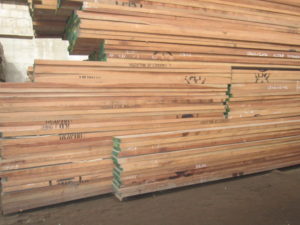Typically a dark reddish or purplish brown; commonly with white resin streaks present. Grain can be straight or interlocked. With a coarse texture and low natural luster. Diffuse-porous; large to very large pores in no specific arrangement, few to very few; solitary and radial multiples of 2-3; tyloses occasionally present; parenchyma vasicentric, winged, and banded with embedded resin canals; narrow to medium rays, spacing normal.Reported as moderately-durable to non-durable in regard to decay resistance, but is susceptible to insect attack.
Typically easy to work, though any interlocked grain can present problems during planing, and Dark Red Meranti is reported to have very poor steam-bending properties. Some species may have a slight blunting effect on tools due to small levels of silica present in the wood. Glues, stains, and finishes well.
Meranti is widely harvested and available worldwide. It should be moderately priced despite the fact that it is imported.Meranti is not listed in the CITES Appendices, but many species in the Shorea genus are on the IUCN Red List. The majority of Shorea species are listed as being critically endangered due to a population reduction of over 80% in the past three generations, caused by a decline in its natural range, and exploitation. Sustainable/certified sources of Meranti are also available.

